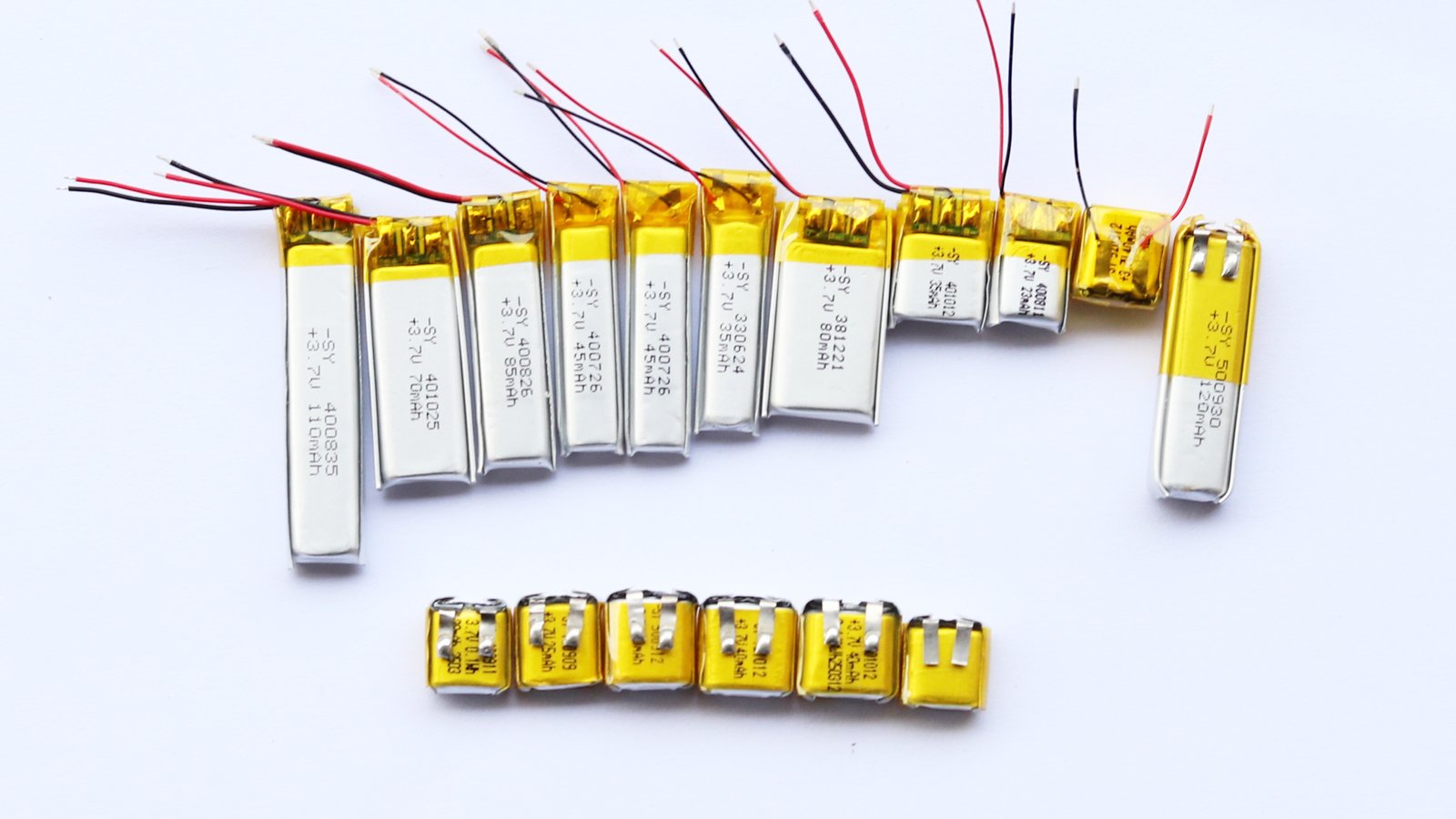
Table of Contents
ToggleIntroduction
Lithium polymer (LiPo) batteries have revolutionized modern electronics, offering lightweight, high-energy-density power solutions. They are widely used in smartphones, drones, and electric vehicles.
LiPo batteries use a solid or gel-like polymer electrolyte instead of liquid electrolytes, making them more flexible, lightweight, and safer. This characteristic allows for custom-shaped battery designs, making them a preferred choice in various industries.
Table of Contents
- Definition and Basic Concepts
- Historical Background and Development
- Structure and Composition
- Working Mechanism
- Advantages and Features
- Applications
- Conclusion
Definition and Basic Concepts

LiPo batteries are a type of rechargeable lithium-ion battery that use a polymer electrolyte rather than a traditional liquid electrolyte. This provides better safety, reduced weight, and design flexibility.
Key Characteristics:
- Anode: Usually made of graphite to store lithium ions.
- Cathode: Composed of lithium metal oxides such as lithium cobalt oxide (LiCoO₂).
- Electrolyte: A solid or gel polymer, improving battery stability and safety.
- Separator: A thin membrane preventing short circuits.
Historical Background and Development
LiPo batteries trace their origins to the 1970s, when researchers sought solid-state electrolytes as an alternative to liquid-based lithium-ion batteries.
- 1980s: Bell Labs developed the first solid polymer electrolyte.
- 1990s: Sony introduced lithium-ion batteries, sparking commercial interest.
- 2000s-Present: The use of gel-based polymer electrolytes significantly improved battery efficiency, safety, and flexibility, making them a standard in consumer electronics.
Structure and Composition
A LiPo battery consists of four main components:
-
Anode (Negative Electrode)
- Typically made of graphite
- Stores lithium ions during charging
-
Cathode (Positive Electrode)
- Made from lithium metal oxides (LiCoO₂, LiMn₂O₄, or LiFePO₄)
- Releases lithium ions during discharge
-
Polymer Electrolyte
- Solid or gel-based polymer
- Provides ion conductivity while enhancing safety
-
Separator and Outer Packaging
- Prevents internal short circuits
- Uses aluminum or polymer film for lightweight protection
Working Mechanism
LiPo batteries store and release energy through lithium-ion movement between the anode and cathode.
-
Charging Process:
- Lithium ions move from the cathode to the anode through the electrolyte.
- The battery stores energy in this process.
-
Discharging Process:
- Lithium ions return to the cathode, generating an electric current.
- This current powers electronic devices.
Advantages and Features
Why Choose LiPo Batteries?
| Feature | Benefit |
|---|---|
| Lightweight | Ideal for portable devices like drones and smartphones |
| Flexible Shapes | Can be designed in custom sizes for specific applications |
| High Energy Density | Provides long battery life in compact sizes |
| Lower Risk of Leakage | Solid/gel electrolyte prevents dangerous liquid leaks |
| Fast Charging | Supports quick charge technology for rapid energy replenishment |

